2012 Jeep Compass Aftermarket Radio Installation Guide
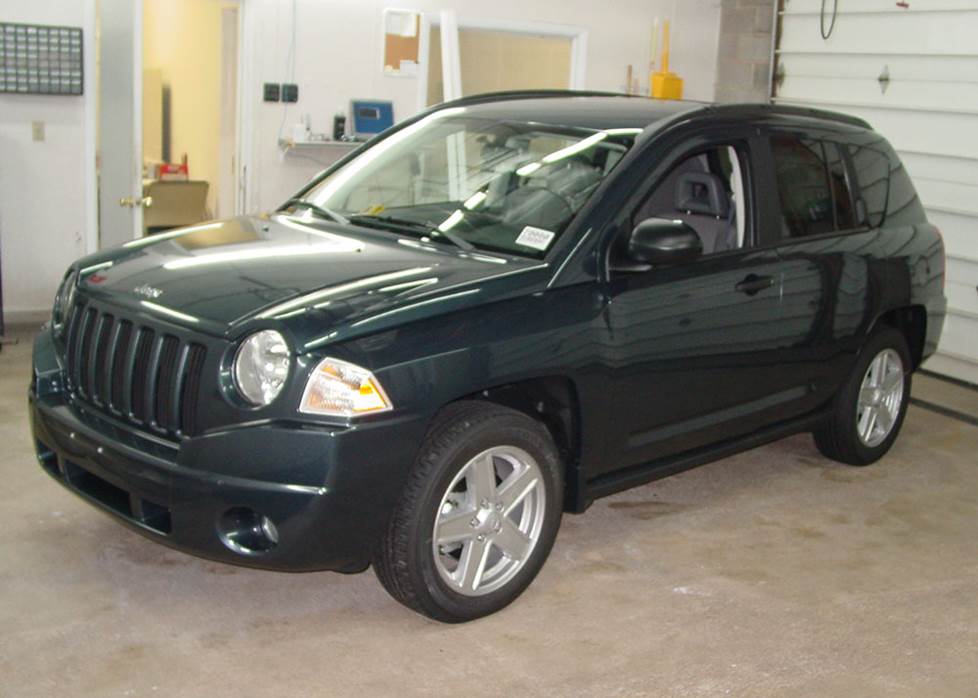
In brief: This Crutchfield Research Garage article gives you an overview of your Jeep's stock stereo system and your aftermarket upgrade options. Use our vehicle selector to find the gear that will fit your Compass or Patriot.
Overview of the Jeep Compass and Patriot
Who says "platform sharing" has to be boring? Yes, it's all about production costs and engineering resources and other yawn-inducing auto industry buzzwords, but the proof is in the product. Jeep's Compass and Patriot prove that platform sharing can produce some truly interesting variations on a theme.

The Patriot is a more rugged vehicle that features some familiar Jeep styling cues (Crutchfield Research Photo)
These fraternal twins may share a family resemblance, a chassis, and a bunch of parts, but they have very distinctive personalities. The Compass is kind of a "soft-roader," built more for the urban jungle than the actual jungle. The Patriot sports Jeep's Trail Rated® designation, which means it's much more suitable for doing typical off-road Jeep things. In other words, the Patriot is the one to have if you're heading out for some rock-climbing and the Compass is a nice choice if you're heading to an outdoor rock festival.
Either way, the stock stereo systems could use an upgrade. Whether you're creeping into a box canyon or crawling through traffic to the big box store, music matters. Here are a few tips on what you can do to make your Compass or Patriot sound better.
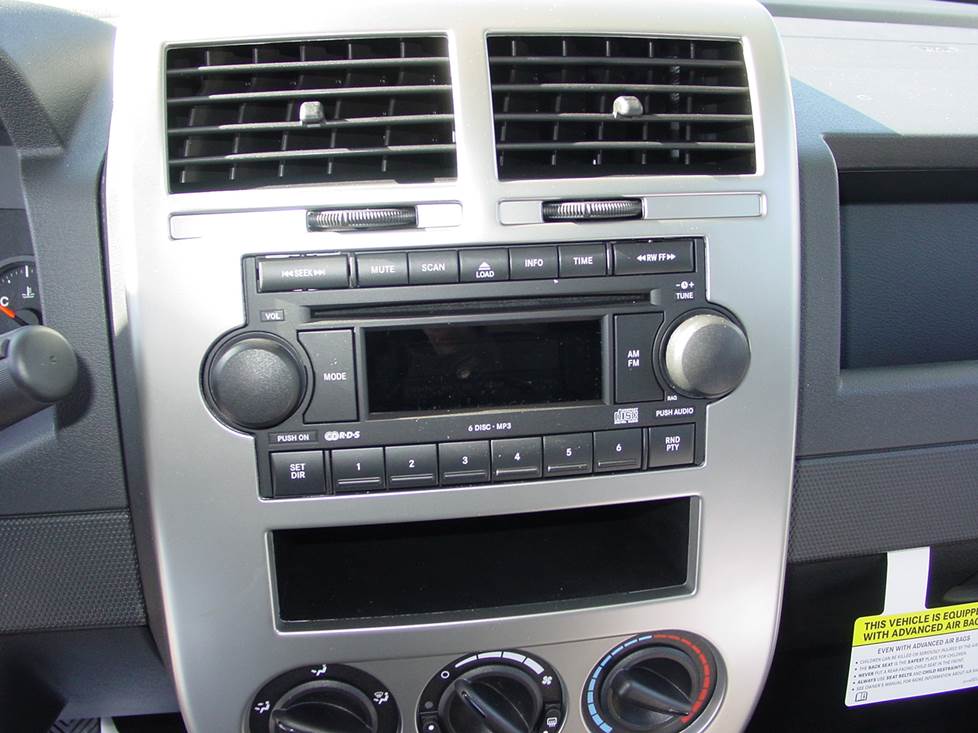
The early base radio is the same in both the Compass and Patriot (Crutchfield Research Photo)
Factory stereo system
The base system in these Jeeps includes an AM/FM/CD receiver that plays through four speakers. The premium Boston Acoustics system offers an AM/FM/6-CD changer and nine speakers, including the nifty Musicgate hatch door speakers.
Any time you replace a vehicle's factory radio, there will be things to work around and through. Manufacturers often add updates and improvements over the course of a model run, and that's certainly the case with the Compass and Patriot, given their 11-year span.
The variations depend on things like the model year of the vehicle and which system you're dealing with. In some models, you'll lose the factory hands-free cellphone interface and the factory AUX input. In some, you'll need to remove the factory radio's rear support bracket to create room for a new stereo.
Detailed stereo and speaker removal instructions
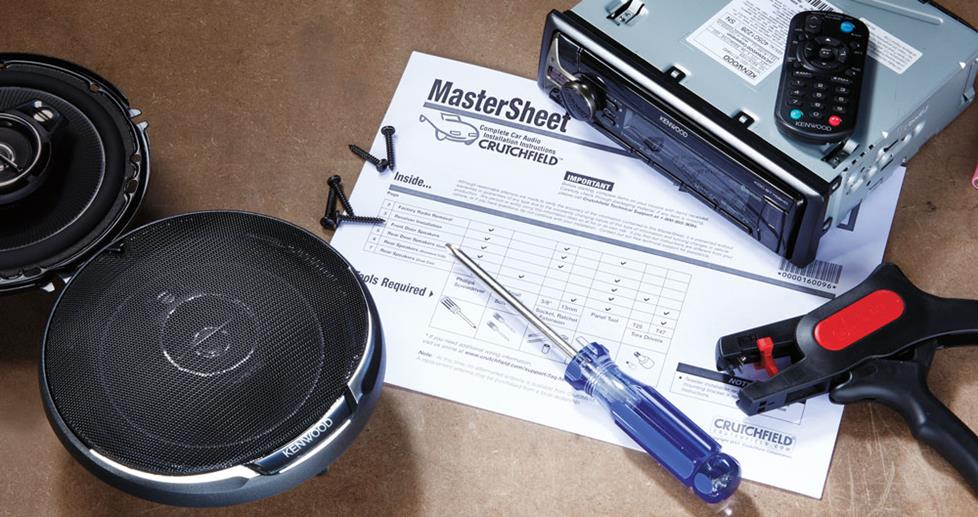
With step-by-step disassembly instructions and plenty of up-close, detailed photos, our exclusive Crutchfield MasterSheet™ takes the guesswork out of removing the factory stereo and speakers. It's free with your Crutchfield order, or you can purchase one separately for just $9.99.
Sound complicated? It really isn't as bad as it might seem, but a laundry list of all the possibilities for the Compass and Patriot would be quite long and probably confuse you more. Besides, all you really care about is what matters for YOUR Jeep, and we'll make sure you know what you need to know before you buy anything.
You can see all the relevant info when you enter your vehicle information and let our database do the wonderful things it does. You'll see what fits your Compass or Patriot, plus you'll see all the important installation issues you need to be aware of before choosing your new receiver. If you have questions, you can talk to a Crutchfield Advisor via call or chat and make sure you're getting exactly what you need.
Your Crutchfield stereo or speaker purchase will also include free Crutchfield MasterSheet disassembly instructions for your Jeep, plus free tech support for the life of your gear. If you run into something confusing during (or after) your installation, our Virginia-based techs are here seven days a week to help you with your audio upgrade project.

The nav receiver can be replaced by a variety of aftermarket models (Crutchfield Research Photo)
Removing your Jeep's factory radio
Speaking of differences, which we were, there are a few big ones that we'll discuss briefly below. Replacing the stereo in any Compass or Patriot is a very do-able job for the DIY-er, but it's important to know what you're getting into. All the radio removal details can be found in your illustrated, step-by-step Crutchfield MasterSheet.
Before you start any radio replacement project, be sure to set the parking brake and disconnect the negative battery cable to prevent any electrical short. And before you disconnect the battery, don't forget to hit "eject" one more time to make sure you didn't leave a disc in the CD player!

Here's a look at the single-DIN dash kit installed in the stock console panel. The kit is included at a discount with your Crutchfield receiver purchase (Crutchfield Research Photo)
2007-2008 models
For these two model years, your radio removal process depends on the transmission type. For automatic-equipped vehicles, there's one way to go and for stick-shift models, there's another. Neither are particularly difficult, but there is a difference.
For one thing, when you're working on an automatic-equipped Jeep, you'll need to make sure the wiring harnesses associated with the airbag are connected before you turn on the ignition switch to test the receiver. If it's not connected, the airbag light will come on and you'll have to visit the dealership to get a reset. That'll likely cost you money, so don't forget!
A variety of receivers will fit in your Compass or Patriot, and you'll see what's available when you enter your vehicle information.
Tools needed (automatic transmissions): Panel tool, Phillips screwdriver
Tools needed (manual transmissions): Panel tool, small flat-blade screwdriver, Phillips screwdriver
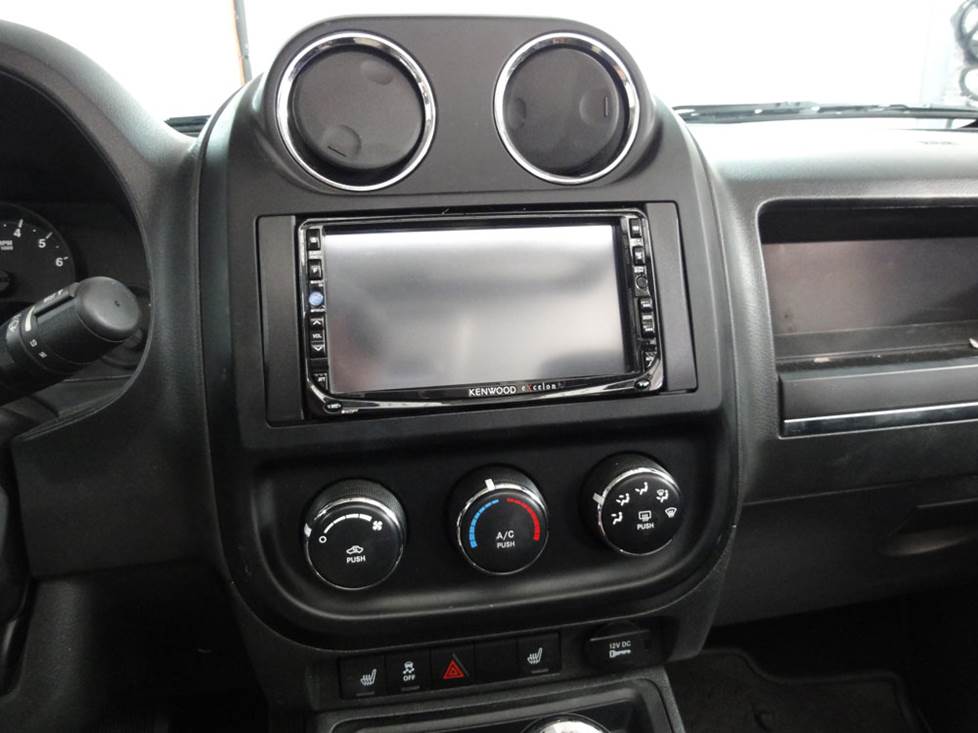
Here's what an aftermarket receiver looks like in the newer models. Pretty slick, we'd say. (Crutchfield Research Photo)
2009-2017 models
The 2009-up models are much easier to deal with, receiver-wise. They're not "plug-and-play" easy, mind you (Few things in life are, alas…), but comparatively speaking, they're better than the earlier models.
Starting at the bottom edge, use a panel tool to pry out the receiver trim panel and its retaining clips, then disconnect the harnesses and remove the panel. Remove the four Phillips screws securing the receiver, then disconnect the harness and remove the receiver.
The (slightly) tricky bit comes if you're installing an aftermarket double-DIN (4" tall) receiver. You'll need to remove the four Phillips screws securing the rear support bracket to the sub-dash, then pull the bracket downward to remove.

You'll need to unbolt this support bracket to install a double-DIN receiver in 2009-17 models (Crutchfield Research Photo)
The bracket is wedged rather snugly between the sub-dash panels and will probably require some extensive effort to remove. It'll come, but be prepared for grunting, groaning, and the possibility you'll mutter a few choice words you don't want the kids to hear. You'll also need to cut out the dividing bar between the factory radio and the adjoining pocket (or cassette deck, in some cases).
When you order your new receiver from Crutchfield, you'll save on the wiring harness adapter and dash kit you'll need to install your new receiver.
Note: If you're installing a single-DIN (2" tall) receiver, models with fold-down faces are not recommended for either of these Jeeps.
Tools needed: Panel tool, Phillips screwdriver
Shop for car stereos that fit your Jeep Compass
Steering wheel audio controls
It's relatively easy to retain your Jeep's steering wheel audio controls when you install a new stereo. When you enter your vehicle information, our database will choose the adapter you need to make your factory steering wheel controls work with your new receiver.
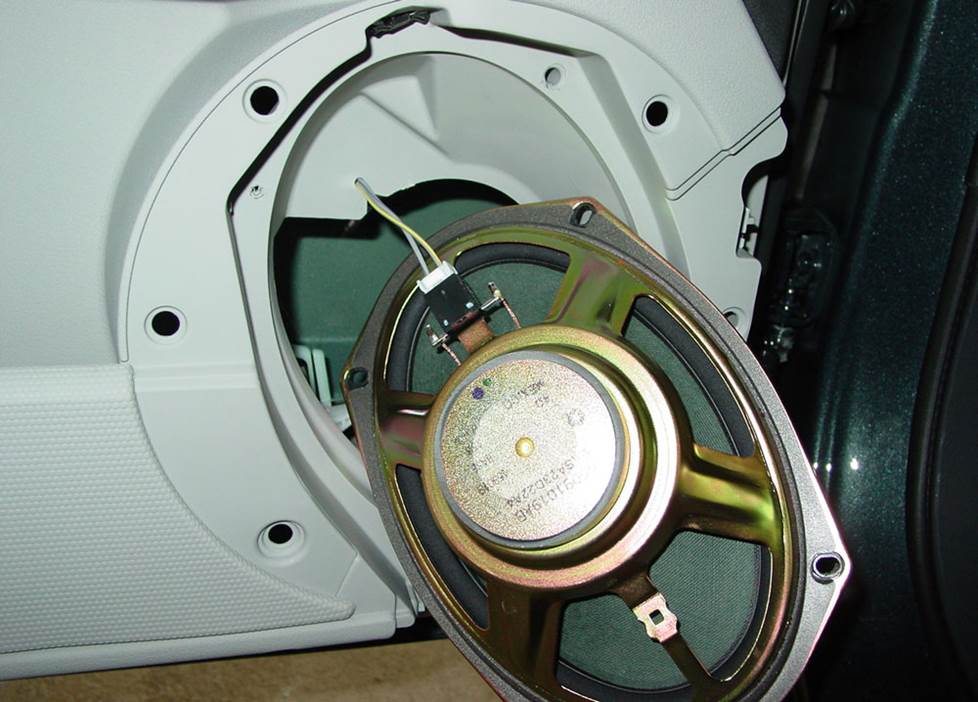
The front door speakers are very easy to reach and replace in these Jeep SUVs (Crutchfield Research Photo)
Removing your factory speakers
Removing the dash speakers in these vehicles varies from easy to impossible, while removing the door and hatch speakers is actually pretty easy. The Boston Acoustics subwoofer takes a while to get to, but it's easy to replace once you're in there.
In many cases, if you bypass the factory amp, you'll want to replace the low-impedance stock speakers with 4-ohm aftermarket speakers to prevent overheating or damaging the new radio.

In the early models, getting to the center dash speaker is something you'll do along the way to removing the stock radio. On later models, we don't suggest attempting this. (Crutchfield Research Photo)
Removing the dash speakers
In the 2007-2008 models, the 2" dash speakers are reasonably easy to reach and replace. You'll start by prying off the screw cover on the pillar trim and removing one exposed Phillips screw. Pull the gasket down along the pillar, pry on the pillar trim to release the retaining clips, then remove the trim panel.
Pry up on the dash grille/windshield trim to move the clips just enough to get to the speaker location. Now that you can reach the speakers, remove the two Phillips screws securing the speaker to the dash, disconnect the harness, and remove the speaker. There's no bracket available for this location, so you'll need to use our universal backstraps to secure the new speakers.
On the 2009-up models, however, speaker replacement is not recommended due to a rather significant design change. Getting to the dash speakers now involves removing the entire top dash pad, which is a complex and time-consuming process that offers more chance for heartbreak than happiness. Even if you're an above-average DIY-er, we'd suggest leaving the dash speakers alone and focusing your energies on other audio upgrades. You'll be glad you did, trust us.
Tools needed: Panel tool, small flat blade screwdriver, right-angle Phillips screwdriver
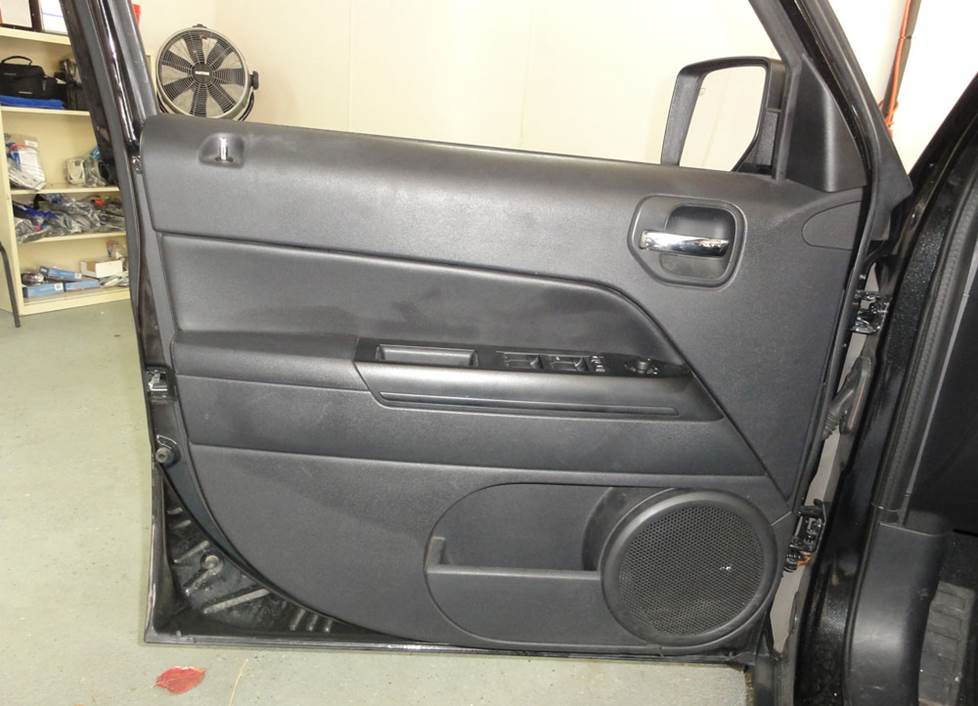
The doors don't necessarily look the same in these SUVs, but the removal and replacement process is the same for all (Crutchfield Research Photo)
Removing the front door speakers
The front door speakers can be replaced by a variety of 6"x9", 6-1/2", or 5-1/4" aftermarket models, and the process is refreshingly simple.
Starting at the lower front corner, pry off the speaker grille to release six clips, then remove the grille. Remove the two Torx T-25 screws and the two Torx T-20 screws securing the speaker to the door panel, then disconnect the harness and remove the speaker. Next…oh wait, that's it. You're ready to install the new speakers.
You might need speaker brackets to install certain speakers, and if you do, we'll include them with your Crutchfield speaker purchase. Once the speakers (and brackets, if need be) are secure, test them out and make sure they're working. If they are, make sure the wires aren't messing with the window operation, then put everything back together.
Tools needed: Panel tool, Torx T-20 & T-25 drivers
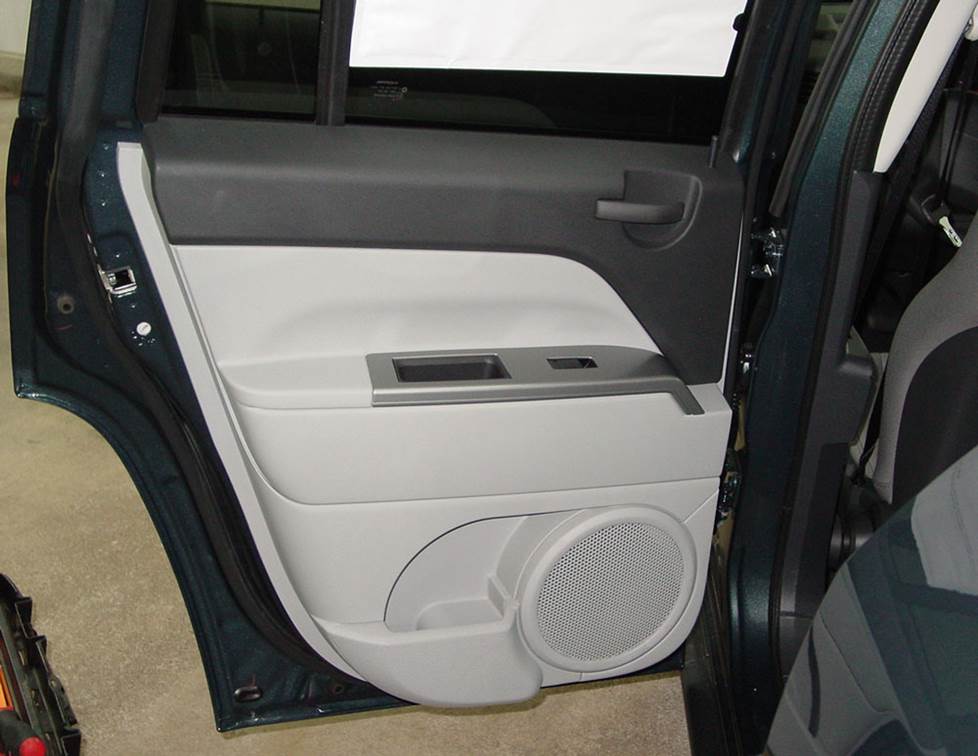
The rear door speaker removal process is the same as it is up front (Crutchfield Research Photo)
Removing the rear door speakers
And now, let's pause for a moment to enjoy a "Great Moment in Lazy Writing." Accurate, though. Replacing the rear door speakers is the same as replacing the front door speakers. Ahem….
The front rear door speakers can be replaced by a variety of 6"x9", 6-1/2", or 5-1/4" aftermarket models, and the process is refreshingly simple.
Starting at the lower front corner, pry off the speaker grille to release six clips, then remove the grille. Remove the two Torx T-25 screws and the two Torx T-20 screws securing the speaker to the door panel, then disconnect the harness and remove the speaker. Next…oh wait, that's it. You're ready to install the new speakers.
You might need speaker brackets to install certain speakers, and if you do, we'll include them with your Crutchfield speaker purchase. Once the speakers (and brackets, if need be) are secure, test them out and make sure they're working. If they are, make sure the wires aren't messing with the window operation, then put everything back together.
Tools needed: Panel tool, Torx T-20 & T-25 drivers
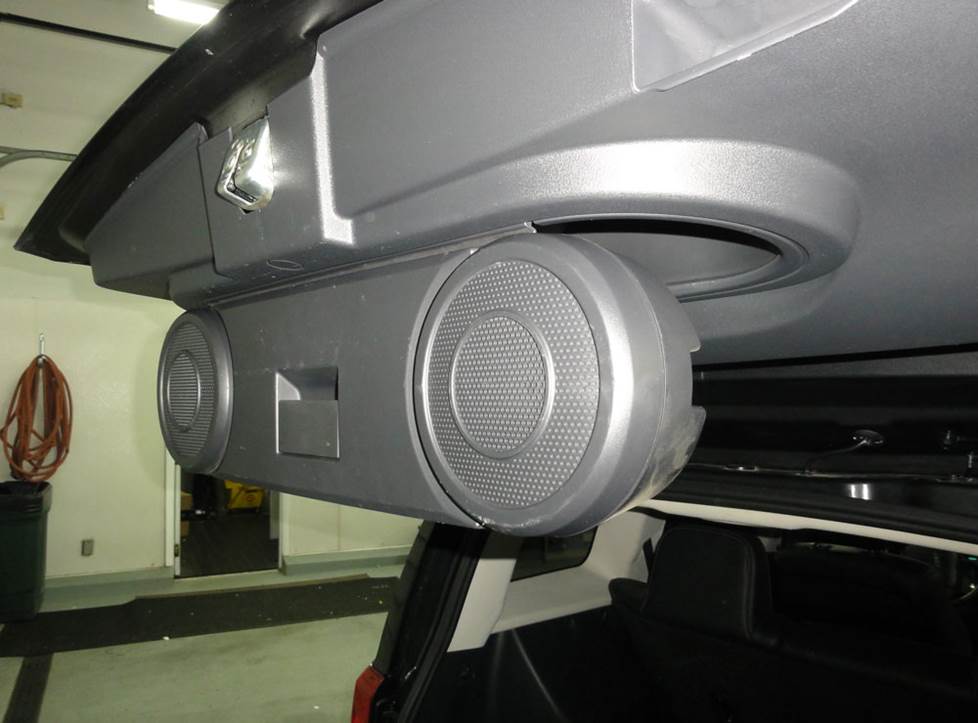
The "Musicgate" fold-down hatch door speaker enclosure is a very cool feature on Boston Acoustics-equipped Jeeps. Upgrading the actual speakers will really rock your tailgate party (Crutchfield Research Photo)
Removing the hatch door speakers (Boston Acoustics)
In Boston Acoustics-equipped models, you'll find 3-1/2" speakers mounted inside an enclosure located on the hatch. It's called "Musicgate" and we think it's pretty nifty. The enclosure latches to the door and flips down, so replacement is pretty easy.
Pull the latch to release the hatch speaker enclosure, then remove the ten Phillips screws that hold the halves of the enclosure together. Remove the enclosure's back panel, then remove the two Phillips screws securing each speaker to the front half of the enclosure. Disconnect the harness and remove the speaker.
Replacing the low-impedance factory speakers with 4-ohm aftermarket speakers will result in lower volume levels, so keep that in mind when you're shopping for new ones.
Tools needed: Phillips screwdriver

You'll need to remove a fair number of panels to get to the factory Boston Acoustics subwoofer (Crutchfield Research Photo)
Removing the rear side panel sub (Boston Acoustics)
The 8" Boston Acoustics dual voice coil subwoofer enclosure is located behind the right-rear quarter panel in the cargo area. It's a low-impedance sub, so replacing it with a 4-ohm model will result in lower volume levels.
Removing the stock sub isn't hard, but getting to it is a somewhat lengthy process that involves a fair amount of panel removal, seat folding, seatbelt fiddling, and, depending on which aftermarket sub you choose, some drilling to create new mounting holes.
None of this is beyond the scope of the average DIY-er, but it will involve patience, organization, and some care. When and if you're drilling, make sure you know what you're drilling into, make sure you know what's around that, and always wear eye protection. Complete disassembly instructions can be found in your Crutchfield MasterSheet.
Tools needed: Panel tool, Torx T-30, 7mm, 8mm, and 10mm drivers
Shop for speakers that fit your Jeep Compass

Want to add more bass? These Jeeps have the cargo space if you need it (Crutchfield Research Photo)
Adding bass to your Compass or Patriot
Both of these Jeeps are considered compact crossovers, but that doesn't mean you don't have a decent amount of space for a subwoofer box. According to our Research Team, the available space measures 32" W x 14" H x 29"/36" D, so you'll be able to add a fair amount of boom back here.
If you prefer to save that cargo space for groceries and gear, you might want to look into a powered subwoofer. They take up a lot less space, but they can still do a nice job of improving your system's bottom-end performance.
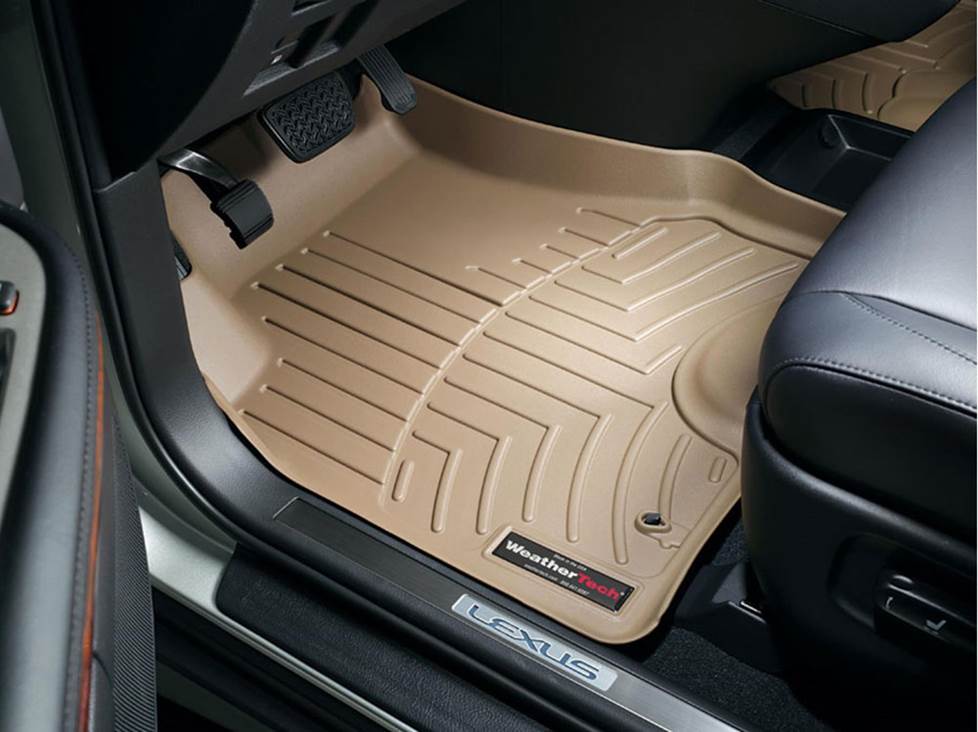
Custom-fit WeatherTech floor liners will help protect your Jeep's carpeting
Other options for your Compass or Patriot
Here are some other upgrade ideas for your Jeep Compass or Patriot.
Floor mats to protect your carpet
No matter how much you pamper your Compass or Patriot, you're eventually going to get involved in some sort of Jeep-like activity that gets you and/or it dirty. When that happens, it's a good idea to have a set of WeatherTech liners on the floors and especially in the cargo area. These incredibly durable mats trap moisture, contain dirt, and keep your factory carpets looking good. To see all the mats that fit your truck, enter your vehicle info.
Roof-mounted storage
Jeep owners tend to have a certain affinity for travel and adventuring. Recreational pursuits such hunting, fishing, and camping require a lot of gear, so sometimes you need even more space than these SUVs have to offer. Lightweight cargo carriers, bike racks, and other travel storage gear from Thule will give you the extra space you need.
Security systems and remote start
Installing a security system in your Compass or Patriot won't be easy (security systems rarely are), but it's definitely a good idea if you tow long distances and stop overnight. Our Crutchfield Advisors can help figure out what you need to get the job done, but we usually recommend taking your Jeep to a professional installer.
Adding remote start capability to your SUV lets you warm it up in the winter or cool it down in the summer. Installation is usually easier with these systems, but we still ask that you call to order so that we can make sure you get the right harness for your ride.
Find the audio gear that fits your car or truck
Visit our Outfit My Car page and enter your vehicle information to see stereos, speakers, subs, and other audio accessories that will work in your vehicle.
2012 Jeep Compass Aftermarket Radio Installation Guide
Source: https://www.crutchfield.com/ISEO-rgbtcspd/learn/2007-2017-jeep-compass-and-patriot.html
0 Response to "2012 Jeep Compass Aftermarket Radio Installation Guide"
Post a Comment